Special Report
8 States That Will Make Millions Taxing Marijuana
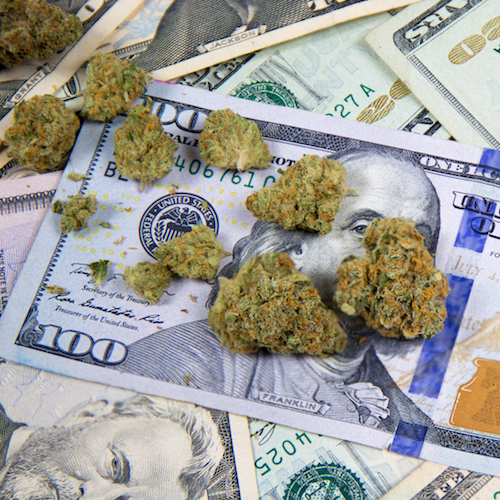
Published:
Last Updated:

Legislation to regulate and tax marijuana sales in a manner similar to alcohol was introduced this month in the U.S. House of Representatives. While such legislation would be a first for the federal government, several states either already are, or soon will be, collecting millions in revenue from marijuana sales.
Among states that have legalized pot, marijuana tax policies vary considerably. Some states, like Oregon and Washington, levy a marijuana sales tax at the consumer level. Others, such as Alaska and Nevada, tax marijuana at the wholesale level.
[in-text-ad]
24/7 Wall St. reviewed tax policy research organization Tax Foundation data to identify the eight states profiting from legalized marijuana.
Click here to see the 8 states that will make millions taxing marijuana.
Nationwide, eight states and the District of Columbia have legalized recreational marijuana use. In most cases, laws in these states now allow adults 21 and older to grow and possess a specified amount of marijuana for private use.
Four of these states — California, Maine, Massachusetts, and Nevada — voted for legalization as recently as last November. Because legalization is in its infancy in these states, recreational marijuana dispensaries will not open for at least several months. These buffer periods are intended to allow legislators enough time to craft laws to properly regulate the new industry.
Other states, like Colorado and Oregon, have already begun regulating and taxing recreational marijuana sales, adding tens of millions of dollars in revenue to state coffers.
While states regulating and taxing marijuana are frequently lumped together, Morgan Scarboro, a policy analyst with the Tax Foundation, explained in an exchange with 24/7 Wall St. that indeed, “there’s quite a difference in how states tax marijuana.”
For example, while Massachusetts will levy a relatively small 3.75% sales tax beginning in mid-2018, Washington state taxes retail marijuana sales at a rate of 37%. “Massachusetts’ low rate may incentivize more people to switch from the black market to the legal market; however, Washington will collect more revenue on every sale,” Scarboro said.
For many, potential tax revenue is a compelling argument for legalization and regulation. For example, California, the most populous state in the country, anticipates that annual marijuana tax revenue will reach $1 billion. Still, in most cases, revenue from pot accounts for a relatively small share of state budgets. According to Scarboro, tax revenue is likely only “persuasive if a state is already considering legalizing marijuana.” Otherwise, “it doesn’t seem likely that any reasonable revenue number will convince [some states] to pass recreational marijuana laws.”
Indeed, residents of states that have already legalized appear to be much more open to pot use, with most reporting higher than average marijuana usage rates, even before the drug was legalized. With the exception of Nevada, all eight states to legalize recreational marijuana have a higher adult usage rate than the comparable 13.4% nationwide annual adult usage rate.
To determine the states making the most from taxing recreational marijuana, 24/7 Wall St. reviewed marijuana tax rates using the latest tax data compiled by tax policy research organization Tax Foundation. Marijuana usage rates are annualized averages from 2014-2015 and come from the Substance Abuse and Mental Health Services Administration. Per capita state tax collections also came from the Tax Foundation.

1. Alaska
> Marijuana tax: $50 per oz. wholesale
> 18+ pop. usage rate: 22.3% (2nd highest)
> Recreational use legal as of: Feb. 24, 2015
> FY2015 per capita state tax collections: $1,170 (the lowest)
The first marijuana store in Alaska opened in October 2016. For this reason, the state has not had long to benefit from a marijuana tax. Alaska taxes the transfer of marijuana, from the cultivation facility to the retailer. Taxes are due on a monthly basis at a rate of $50 per ounce of bud or flower, and $15 per ounce of other parts of the plant, such as stems and leaves.
An average 22.3% of Alaskans age 18 and up use marijuana at least once a year, the second highest share of any state and well above the comparable 13.4% national share. Alaska’s marijuana revenue increased over the first three months of sale, but dipped slightly in January. By the end of June, the state anticipates total marijuana tax revenue to top $5 million. Under state law, half of that money will go to programs to keep people out of prison, and the other half will be allocated to the state’s general fund.
[in-text-ad]
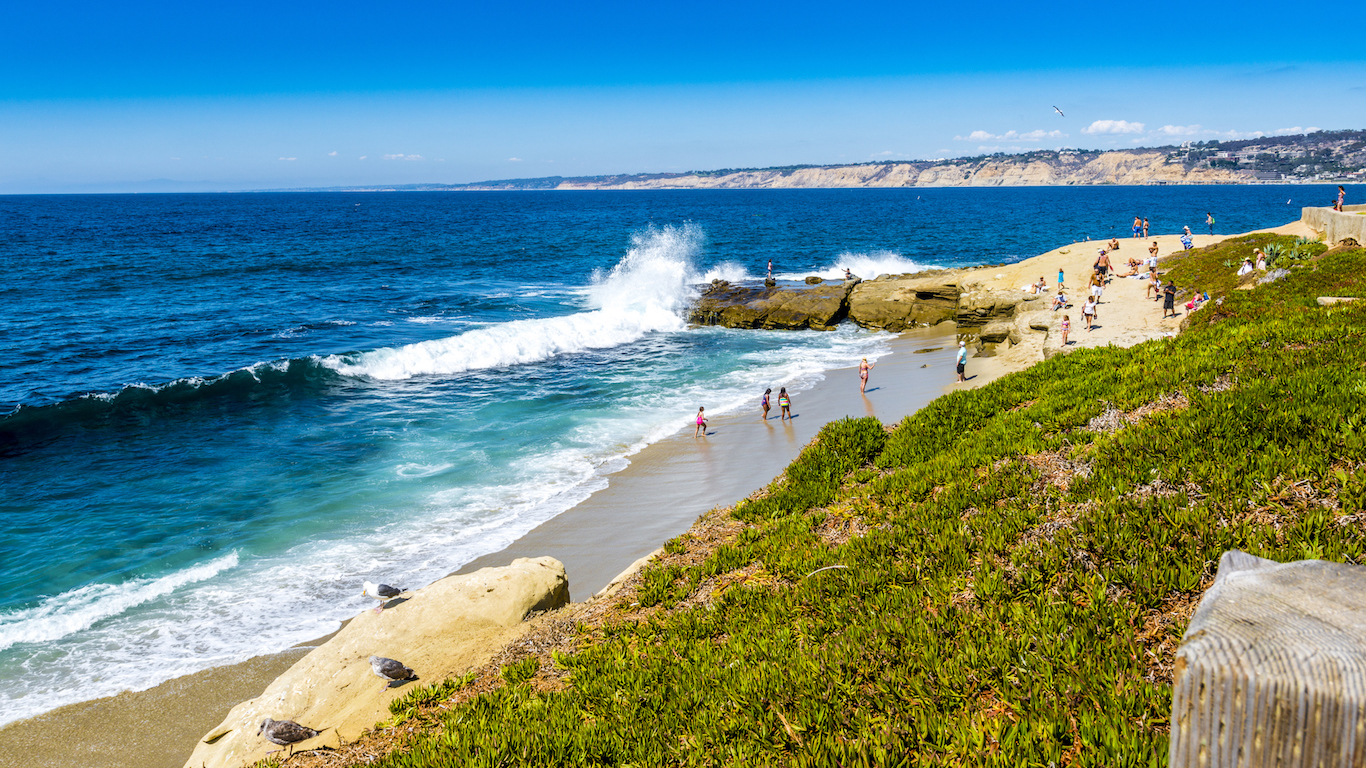
2. California
> Marijuana tax: 15% sales tax/$9.25 per oz. wholesale
> 18+ pop. usage rate: 15.4% (12th highest)
> Recreational use legal as of: Jan. 1, 2018
> FY2015 per capita state tax collections: $3,862 (9th highest)
This past fall, voters in California approved Proposition 64, legalizing recreational marijuana use. Though adults in the state are now legally allowed to possess their own personal pot, non-medical marijuana dispensaries will not be officially licensed until the beginning of 2018 to allow the state time to develop appropriate regulations. When the first marijuana retailer opens next year, the state will impose a 15% sales tax. It will also tax cultivators $9.25 per ounce of flowers and $2.75 per ounce of leaves and stems. Local governments are also authorized to levy their own tax.
The most populous state in the country, California also has the largest potential source of marijuana tax revenue. Some 4.5 million Californians age 18 and up use marijuana at least once year — well more than double the number in any other state. The state anticipates up to $1 billion in annual marijuana tax revenue, which among other things will be used to cover enforcement costs and fund youth drug education programs.
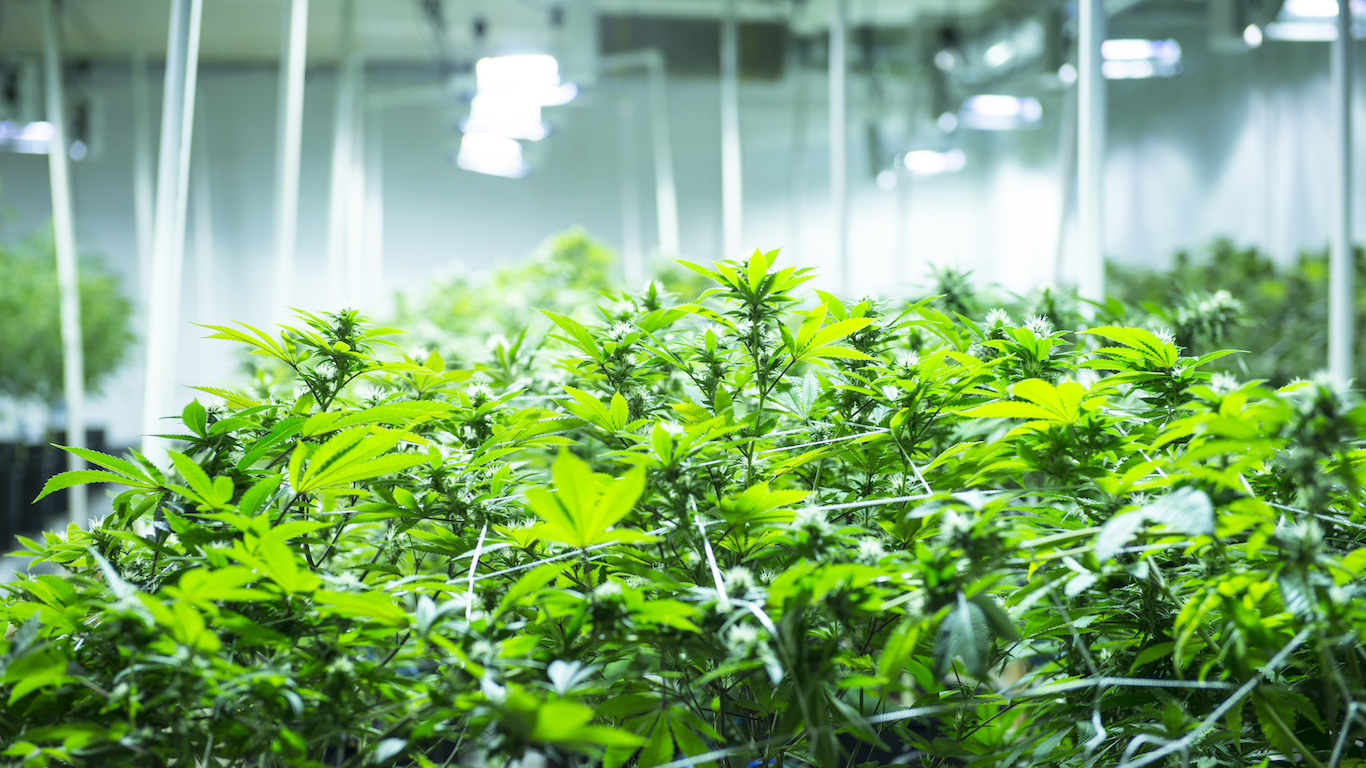
3. Colorado
> Marijuana tax: 15% wholesale/10% sales tax
> 18+ pop. usage rate: 23.6% (the highest)
> Recreational use legal as of: Dec. 10, 2012
> FY2015 per capita state tax collections: $2,348 (14th lowest)
In the fall of 2012, Colorado and Washington became the first states to vote to legalize recreational marijuana. Though adults in Colorado have been allowed to possess up to an ounce of marijuana since December 2012, the first marijuana retailers in the state opened on January 1, 2014. Since then, Colorado has collected millions of dollars in pot taxes. In fiscal 2016 alone, the state collected $5.3 million in marijuana recreational license and application fees and another $19.4 million in retail sales taxes. Currently, Colorado levies a 15% excise on the average retail market price of pot for cultivators, as well as a 10% marijuana sales tax at the retail level. In order to deter consumers from turning to the black market, the sales tax will fall to 8% on July 1, 2017.
As one of the first states to legalize recreational marijuana, it may not be surprising that marijuana use is relatively common in Colorado. Of the state’s 18 and older population, 23.6% use marijuana at least once a year, the largest such share of any state.

4. Maine
> Marijuana tax: 10% sales tax
> 18+ pop. usage rate: 19.9% (4th highest)
> Recreational use legal as of: Jan. 30, 2017
> FY2015 per capita state tax collections: $3,057 (14th highest)
Maine was one of four states to vote in favor of legalizing recreational marijuana use this past November. As of January 30, 2017, adults in Maine are legally allowed to grow and possess their own pot for personal use. However, retail sales of the drug will not be permitted at least until February 2018, allowing state lawmakers time to iron out legislation related to marijuana dispensary licensing and enforcement.
According to the Tax Foundation, all marijuana sales in Maine will be subject to a 10% sales tax, in addition to the state’s 5.5% sales tax rate. Marijuana tax revenue will likely be significant as roughly one in every four adults in Maine use marijuana each year, well above the 13.4% national useage rate.
[in-text-ad]
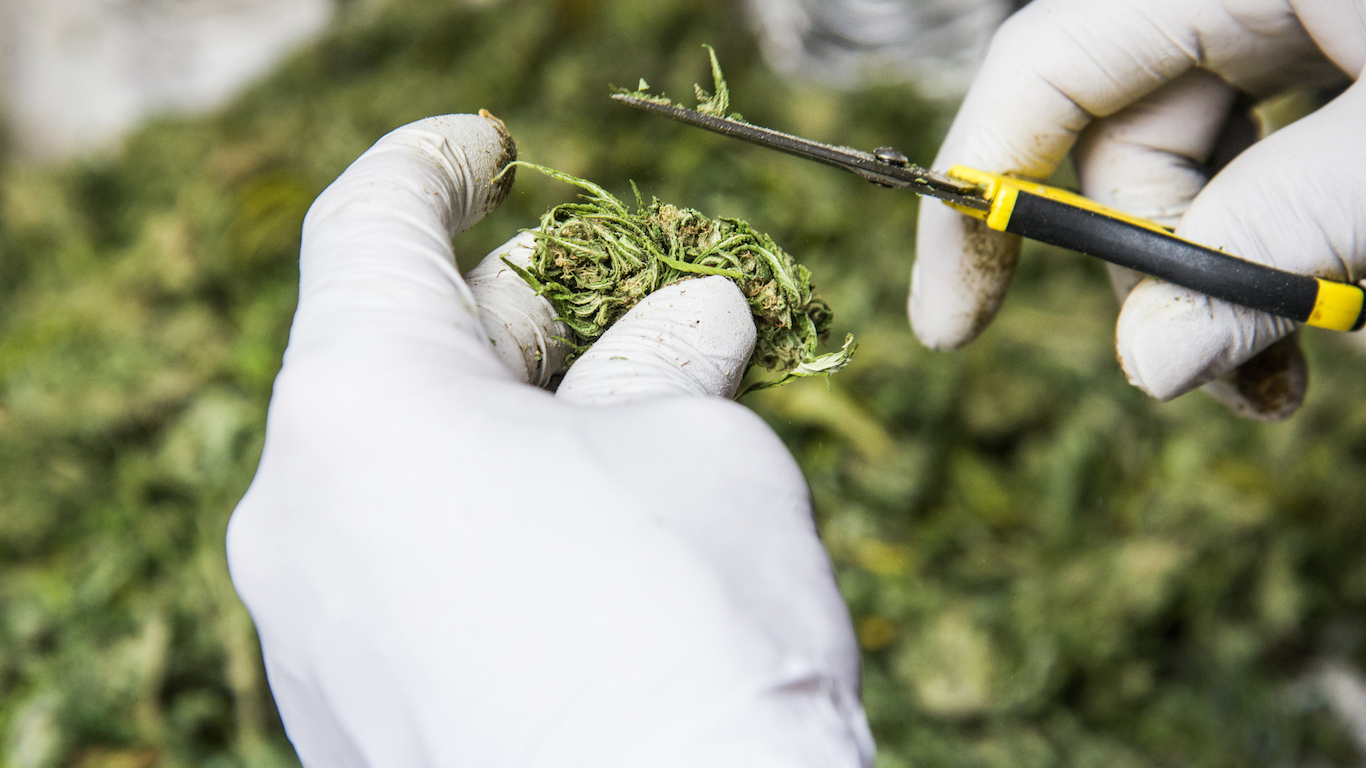
5. Massachusetts
> Marijuana tax: 3.75% sales tax
> 18+ pop. usage rate: 18.5% (7th highest)
> Recreational use legal as of: Dec. 15, 2016
> FY2015 per capita state tax collections: $3,976 (7th highest)
Massachusetts was one of four states that voted to legalize recreational marijuana in November 2016. Approved by a narrow margin, the ballot initiative allows adults in the state to cultivate and possess a limited amount of marijuana for personal use. However, in order to properly prepare for the new industry, Gov. Charlie Baker signed a bill preventing any marijuana retailers from opening at least until mid-2018. When licensed recreational pot dispensaries open their doors, the state will levy a 3.75% sales tax on all transactions — on top of the state’s existing 6.25% sales tax. Local governments are authorized to levy an additional 2% tax on pot sales.
Like most states on this list, marijuana use is relatively common in Massachusetts. Some 18.5% of adults in the state smoke marijuana annually compared to only 13.4% of American adults.

6. Nevada
> Marijuana tax: 15% wholesale
> 18+ pop. usage rate: 12.9% (21st highest)
> Recreational use legal as of: Jan. 1, 2017
> FY2015 per capita state tax collections: $2,606 (20th lowest)
Nevada voted to legalize recreational marijuana by a nine-point margin in November 2016. While possession for personal use is now legal, medical dispensaries will not be permitted to sell recreational pot until mid-2017. An entrepreneur will have to wait at least until October 2018 to open a recreational-use shop. When recreational pot dispensaries open, Nevada will levy a 15% tax on the retailer’s inventory, which will likely be passed on to the consumer.
Unlike most states on this list, many Nevada residents will be restricted from growing their own pot. Only those who live more than 25 miles from a dispensary will be permitted to cultivate personal marijuana plants. Nevada is also unique from other states on this list as it is the only state with a lower usage rate than the nationwide rate. Only 12.9% of adults in the state use marijuana each year, a smaller share than the 13.4% national adult usage rate.
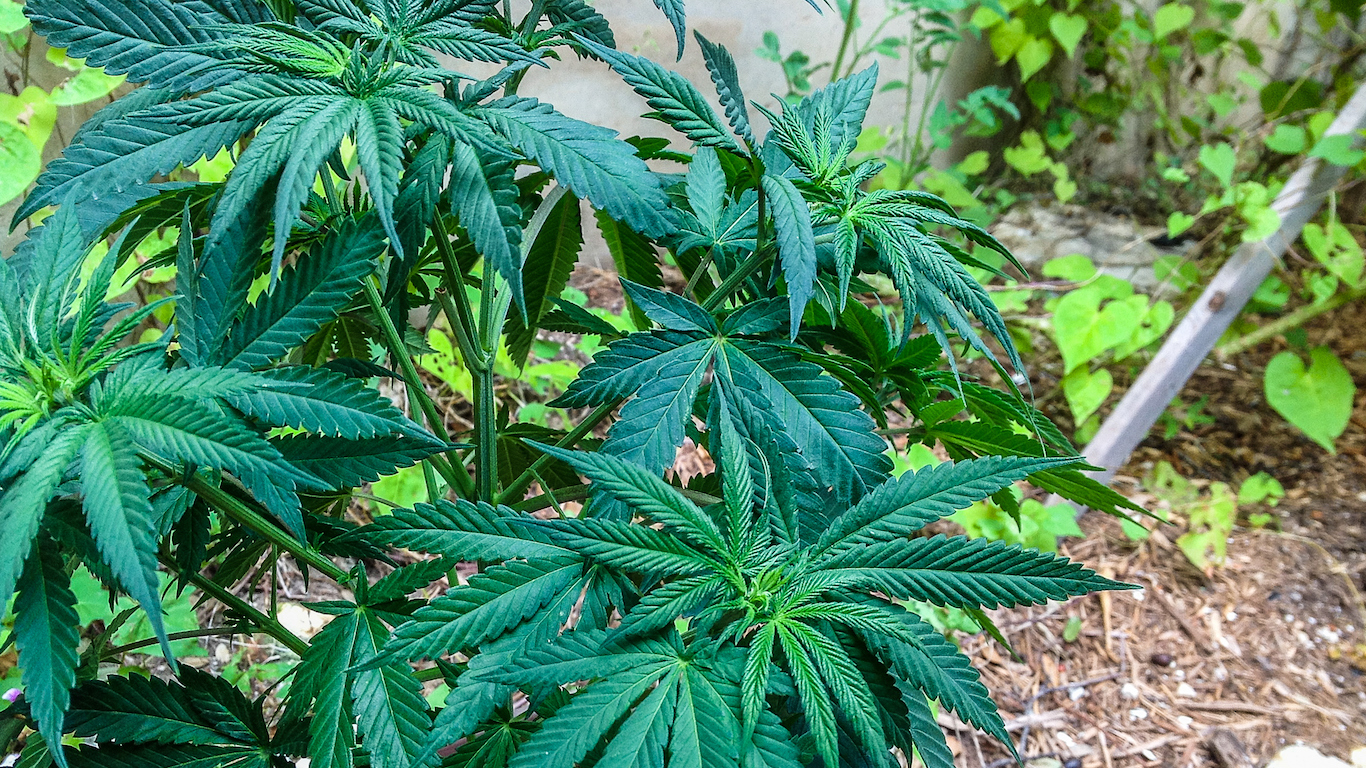
7. Oregon
> Marijuana tax: 17% sales tax
> 18+ pop. usage rate: 19.6% (5th highest)
> Recreational use legal as of: Jul. 1, 2015
> FY2015 per capita state tax collections: $2,625 (22nd lowest)
On July 1, 2015, Oregon joined the growing number of states that legalized recreational marijuana. Since then the state has levied a tax on the drug’s legal sale. On top of the 17% statewide marijuana sales tax, local municipalities can tag on an additional 3% sales tax with voter approval. So far, marijuana taxes have been a boon for the state budget, contributing $60.2 million in 2016, exceeding projections by millions of dollars. The lion’s share of marijuana taxes go towards the Common School Fund. Much of the remaining revenue goes to mental health services, state and local law enforcement, and drug abuse prevention services.
Oregon’s annual marijuana usage rate of 19.6%, while one of the highest in the nation, may increase now that the drug is legally available to adult consumers.
[in-text-ad]

8. Washington
> Marijuana tax: 37% sales tax
> 18+ pop. usage rate: 17.7% (8th highest)
> Recreational use legal as of: Dec. 6, 2012
> FY2015 per capita state tax collections: $2,879 (21st highest)
Washington was one of the first states to pioneer marijuana legalization. The state began regulating pot sales in July 2014, collecting some $83 million in marijuana tax revenue in its first year alone. Until recently, recreational cannabis was taxed in a relatively complex three-tier system. The state levied separate 25% taxes on each the cultivator, the processor, and the retailer. Today, the state collects one 37% tax at the retail point of sale, still considerably more than most states on this list.
If statewide sales taxes are any indicator, Washington’s high marijuana tax rate is not surprising. The state levies a 6.5% sales tax on goods and services, more than the vast majority of states.
Thank you for reading! Have some feedback for us?
Contact the 24/7 Wall St. editorial team.